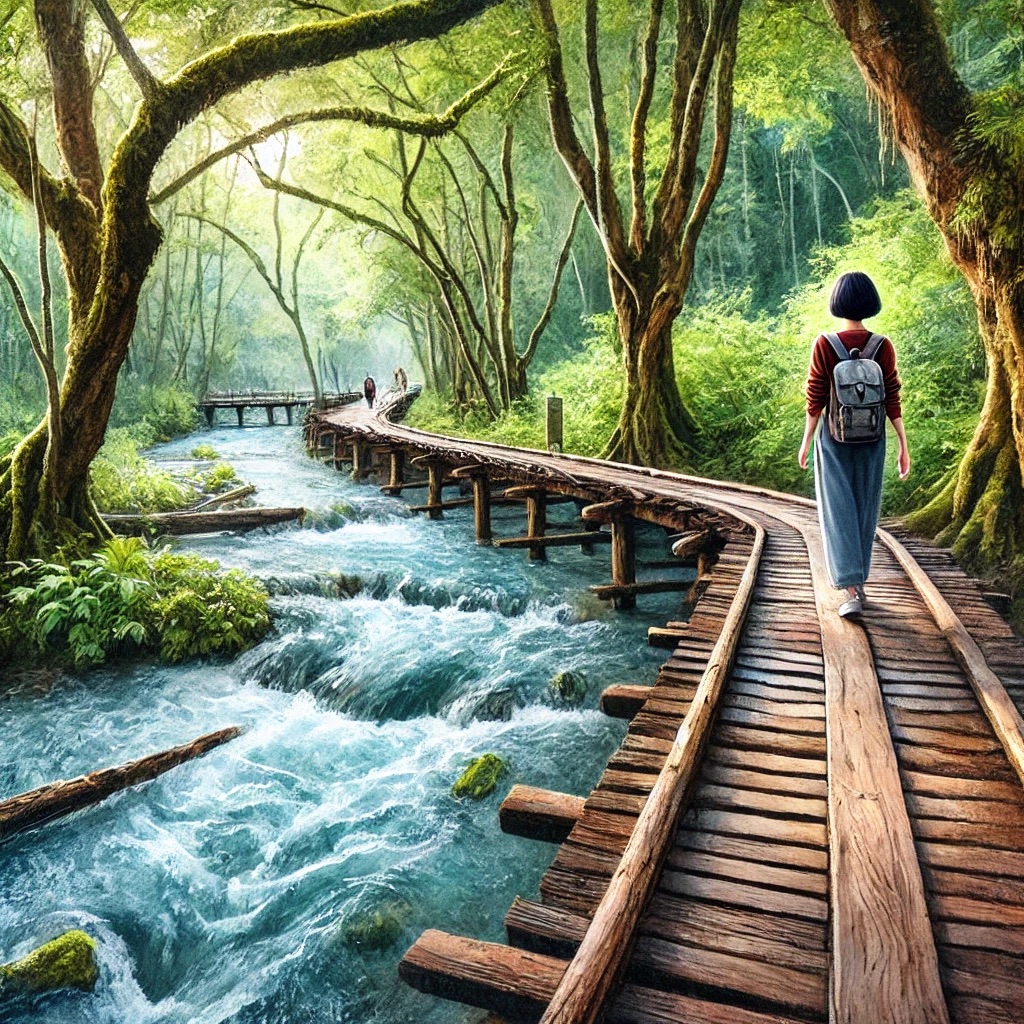ChatGPT:
Plitvice Lakes National Park, located in central Croatia, is one of the country’s most renowned natural attractions and a UNESCO World Heritage site since 1979. The park covers approximately 295 square kilometers (114 square miles) and is celebrated for its stunning series of 16 terraced lakes, which are connected by waterfalls and cascades. The lakes are known for their distinctive colors, ranging from azure to green, grey, or blue, depending on the mineral content and the angle of sunlight.
The park is divided into two sections: the Upper Lakes (Gornja jezera) and the Lower Lakes (Donja jezera). The Upper Lakes are larger and more tranquil, surrounded by dense forests, while the Lower Lakes are smaller but more dramatic, featuring steep canyon walls and some of the park’s most famous waterfalls, including the Veliki Slap (Great Waterfall), which is the tallest in the park at 78 meters (256 feet).
Visitors to Plitvice Lakes can explore the park via a network of wooden footbridges and pathways that meander through the lakes and forests, offering breathtaking views at every turn. There are also boat rides across the largest lake, Kozjak, and a panoramic train that provides an easier way to see some of the park’s highlights.
The park is home to a diverse range of flora and fauna, including rare species such as the brown bear, wolf, and eagle. The rich biodiversity, combined with the park’s geological formations and scenic beauty, makes it a must-visit destination for nature lovers.
Plitvice Lakes is accessible year-round, though each season offers a different experience. Spring and summer showcase the park in full bloom with vibrant colors and lush greenery, while autumn brings a palette of warm, golden hues. Winter transforms the park into a snowy wonderland, with frozen waterfalls and serene, icy lakes.
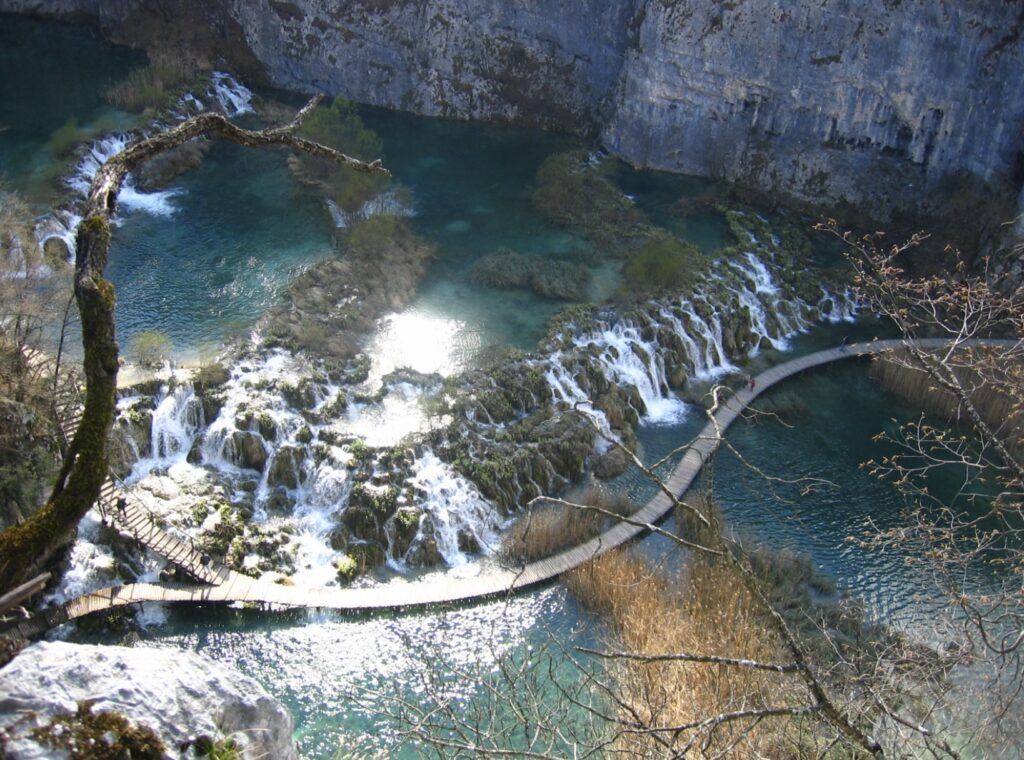
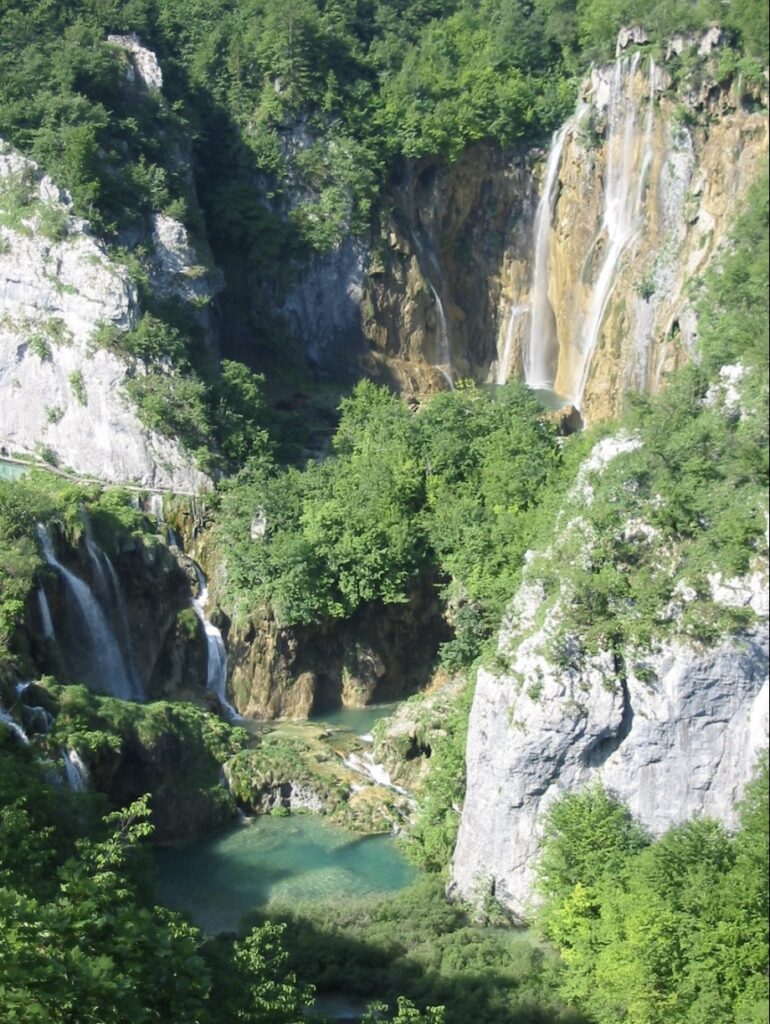
Plitvice Lakes National Park’s unique landscape is shaped by karst topography and the formation of travertine barriers. The park sits on limestone and dolomite bedrock, which water gradually dissolves, creating underground rivers, caves, and sinkholes. As water rich in calcium carbonate flows over the limestone, it deposits travertine, a type of limestone, forming natural dams. These dams create the park’s cascading lakes and waterfalls. The process is accelerated by moss, algae, and bacteria, which help trap the calcium carbonate. The landscape is dynamic, with the continuous deposition and erosion of travertine constantly altering the park’s features.
Plitvice Lakes National Park, Croatia’s oldest and largest national park, has a rich history that reflects both its natural significance and its evolving role in environmental conservation.
Origin and Early History
The area of Plitvice Lakes has been known for its extraordinary beauty and natural resources for centuries. The first recorded mention of the lakes dates back to 1777, by a priest named Dominik Vukasović, who described the area’s stunning landscapes. However, the lakes and surrounding area were largely undeveloped and remained a remote and sparsely populated region, mainly inhabited by small farming and fishing communities.
Establishment as a National Park
The formal recognition of Plitvice Lakes’ significance came in 1949, when it was declared a national park by the government of the Socialist Republic of Croatia, then part of Yugoslavia. This designation aimed to protect the area’s unique geological formations, water systems, and diverse ecosystems. It became the first national park in Croatia, covering approximately 29,482 hectares.
UNESCO World Heritage Status
In 1979, Plitvice Lakes National Park was designated a UNESCO World Heritage site, highlighting its global significance. UNESCO recognized the park for its exceptional natural beauty and the ongoing geological processes that create the travertine formations, lakes, and waterfalls. The status also helped promote international awareness and support for the park’s conservation.
Development and Tourism
Over the decades, Plitvice Lakes National Park has developed into one of Croatia’s most popular tourist destinations. The park has seen significant infrastructure improvements, including the construction of walking paths, wooden footbridges, and viewing platforms to make the park’s natural wonders more accessible to visitors. Additionally, boat rides on Lake Kozjak and a panoramic train were introduced to offer different perspectives of the park.
Challenges and Conservation Efforts
The growing popularity of Plitvice Lakes has brought challenges, particularly regarding the balance between tourism and conservation. Efforts are also made to preserve the park’s biodiversity and maintain the integrity of its natural processes.
Recent Developments
In recent years, Plitvice Lakes National Park has continued to focus on sustainable tourism and environmental protection. The park’s administration works closely with local communities and international organizations to ensure that the park remains a pristine natural environment. New initiatives include the restoration of historical structures, improved visitor facilities, and educational programs to raise awareness about the importance of conservation.
Plitvice Lakes National Park’s origin and development reflect a journey from a remote natural area to an internationally recognized site of natural beauty and ecological importance.
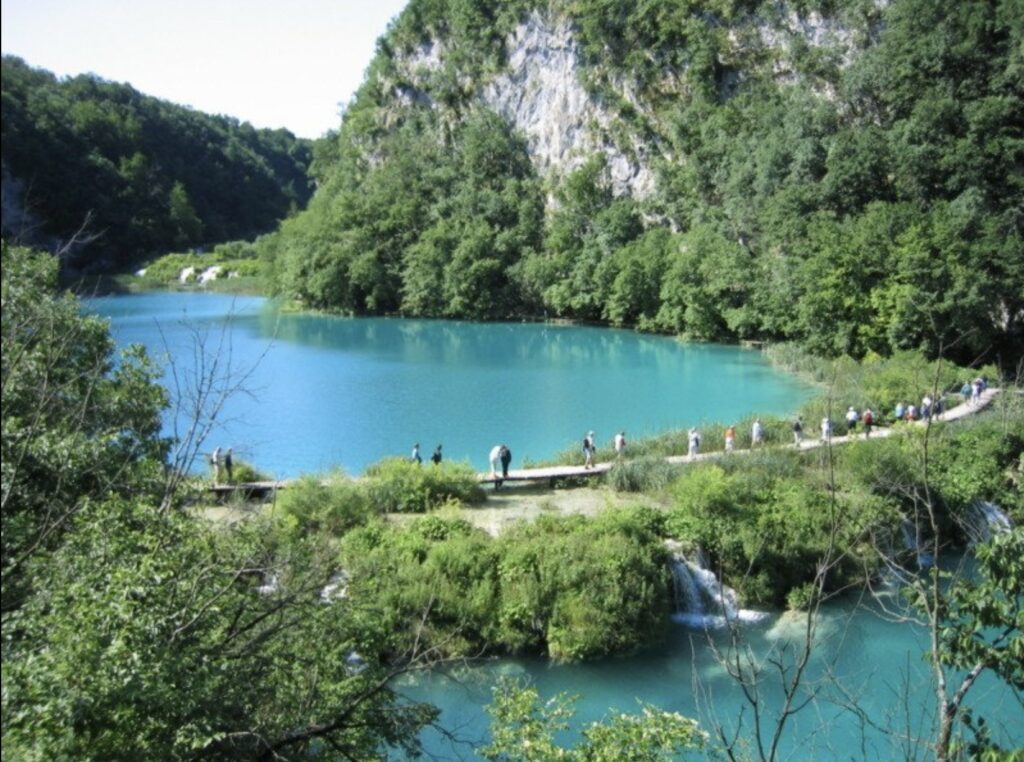
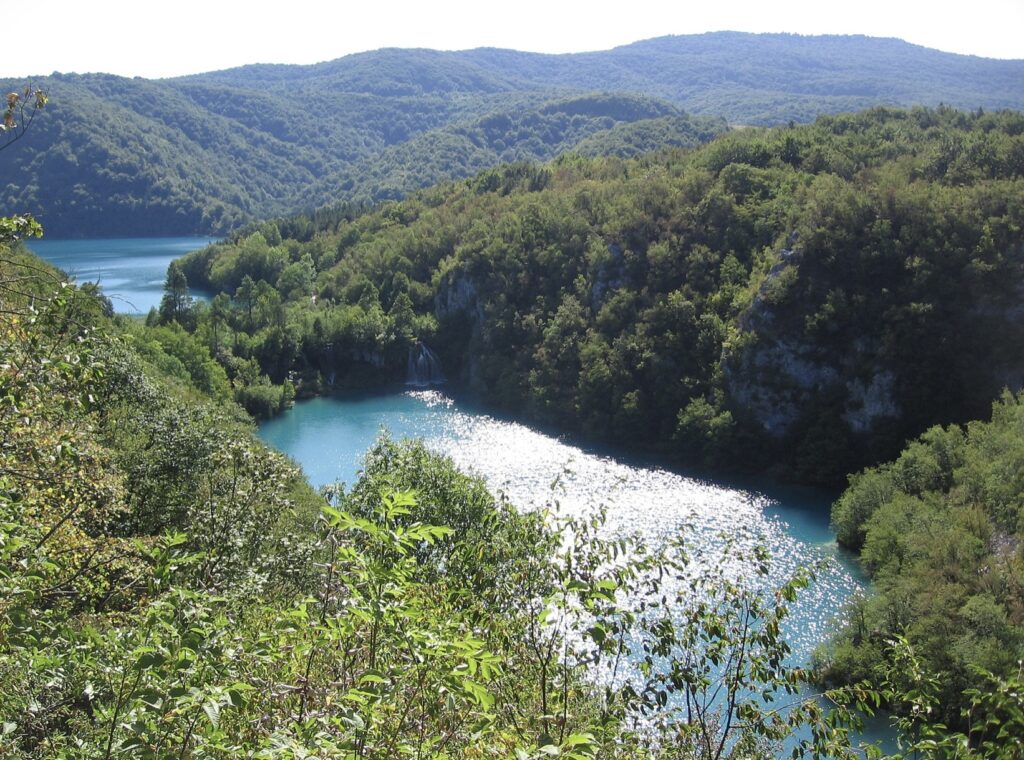
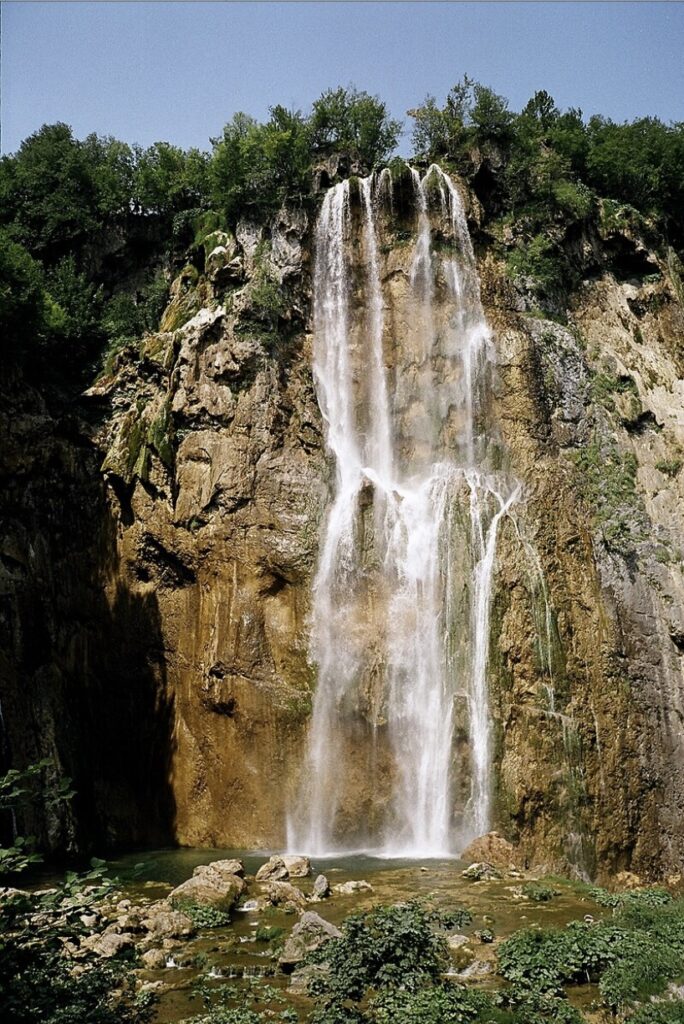
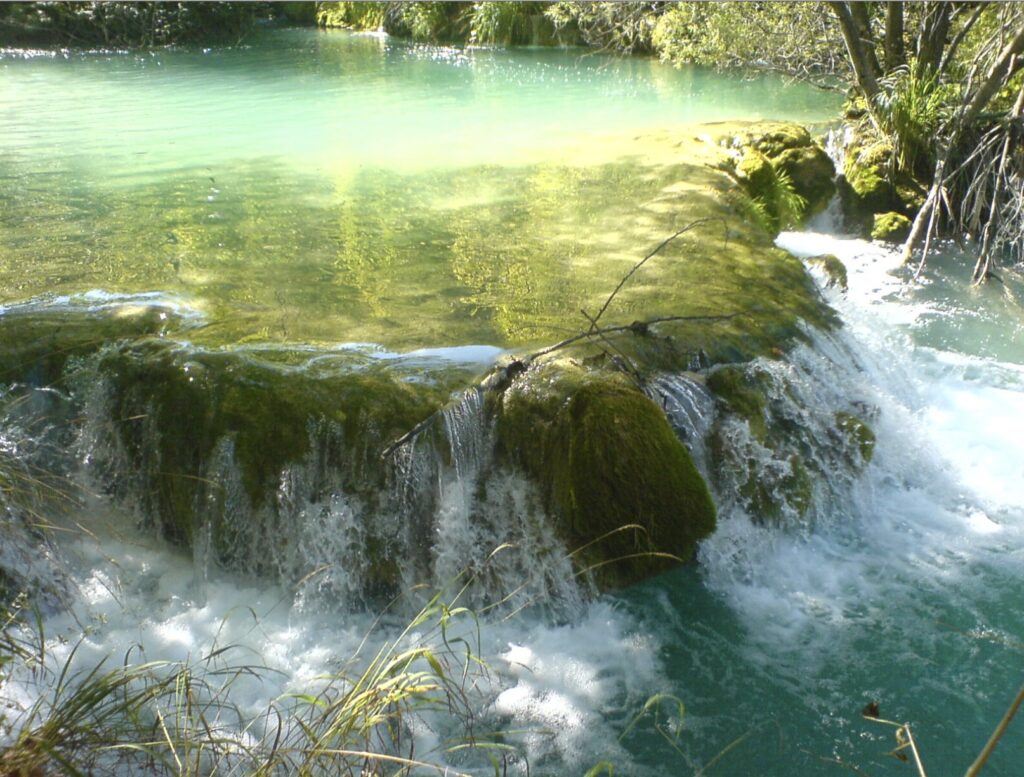
Plitvice Lakes National Park is primarily known for its natural beauty, but it also features several interesting and historically significant sites:
- Šupljara Cave: Located in the Lower Lakes area, this cave is one of the most accessible in the park. It’s a popular spot for visitors due to its unique formations and the panoramic view of the lakes from its entrance.
- Veliki Slap (Great Waterfall): The tallest waterfall in the park, at 78 meters (256 feet), it is not only a stunning natural feature but also a historically significant site due to its proximity to ancient pathways used by local inhabitants.
- Milanovac Lake: Named after Milan, a historical figure associated with the region, this lake is one of the most scenic in the park. It’s surrounded by steep cliffs and offers views of several small waterfalls.
- Old Watermill Remains: Near the park’s entrance, you can find the remains of old watermills that once harnessed the park’s water power for milling grain. These structures are a testament to the historical use of the natural resources in the area.
- Historical Routes and Pathways: Some of the paths within the park follow ancient trade routes that connected inland Croatia with the coast. These routes were used for centuries by traders and travelers.
- Fortified Village of Korana: Just outside the park’s borders, this small village features traditional wooden houses and a history that dates back several centuries. The village offers a glimpse into the local way of life and how it has been influenced by the park’s natural resources.
While Plitvice Lakes is mainly celebrated for its natural wonders, these sites add a layer of historical interest, connecting visitors with the region’s cultural and historical past.
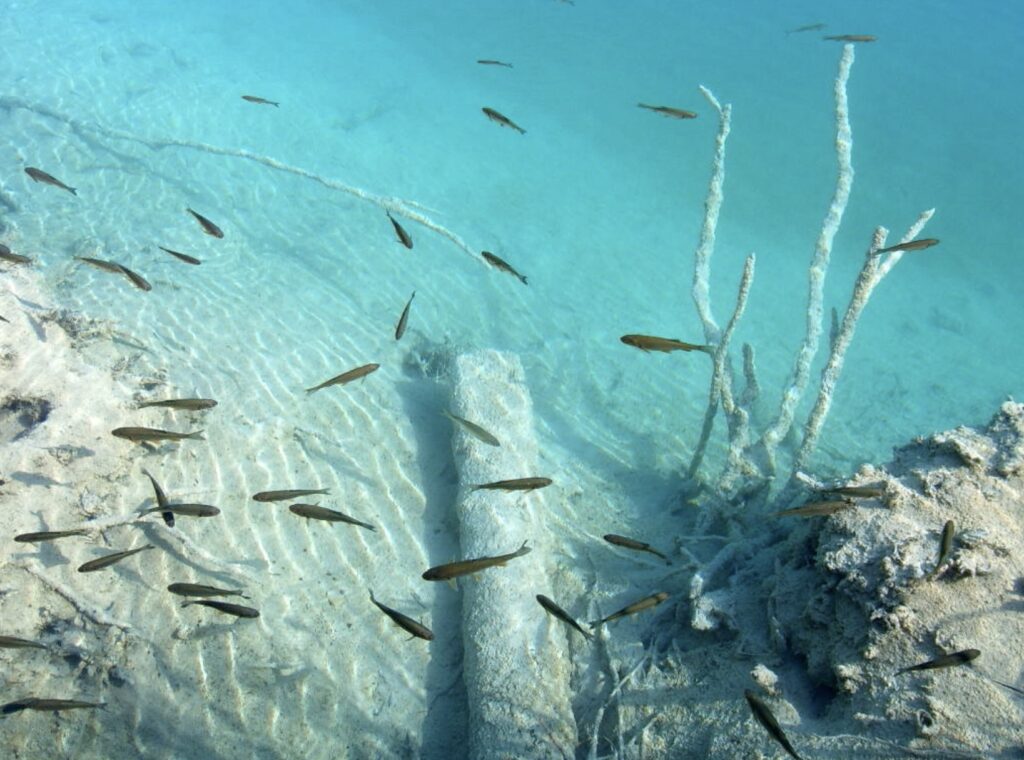
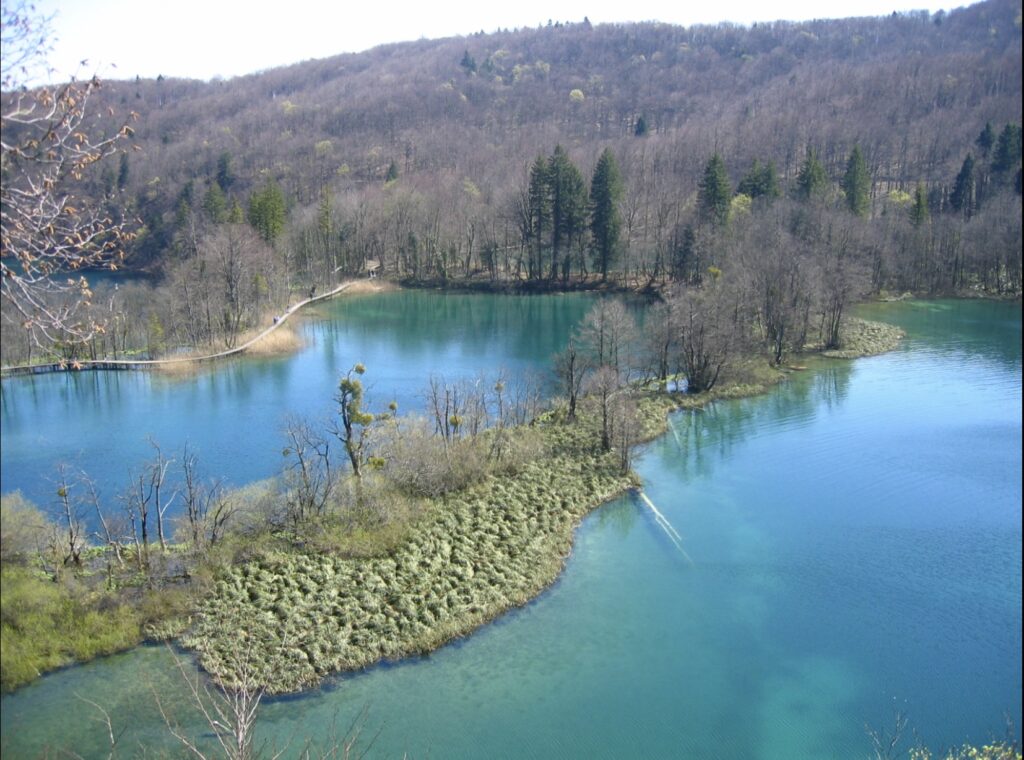
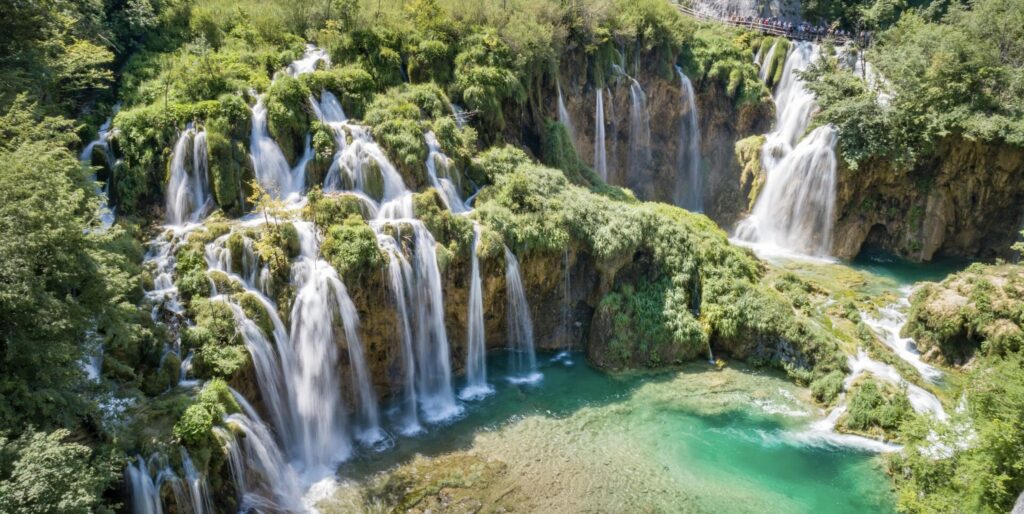
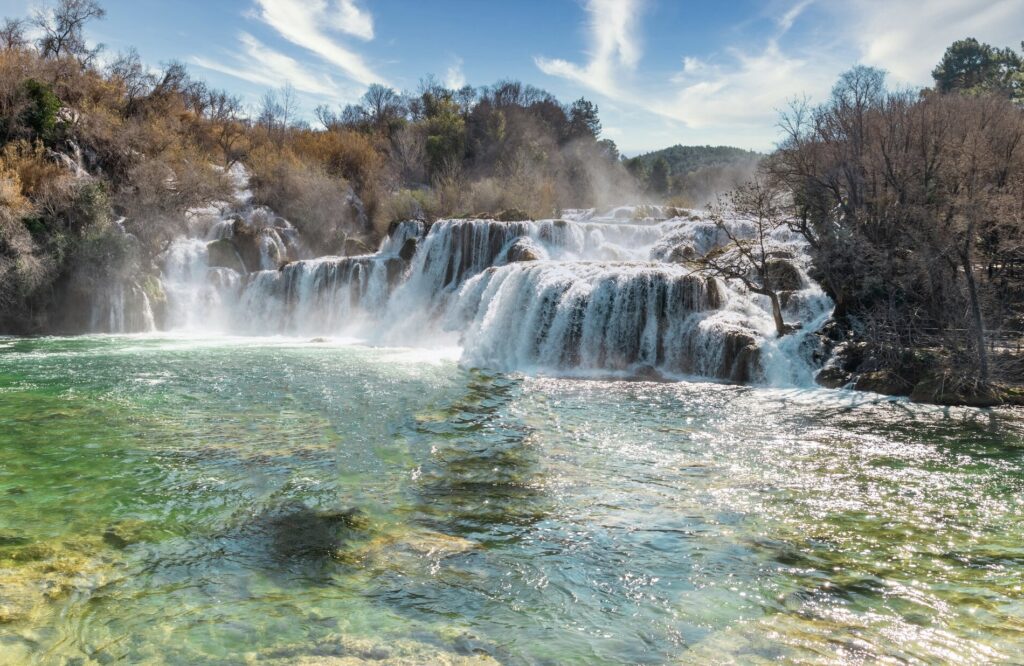
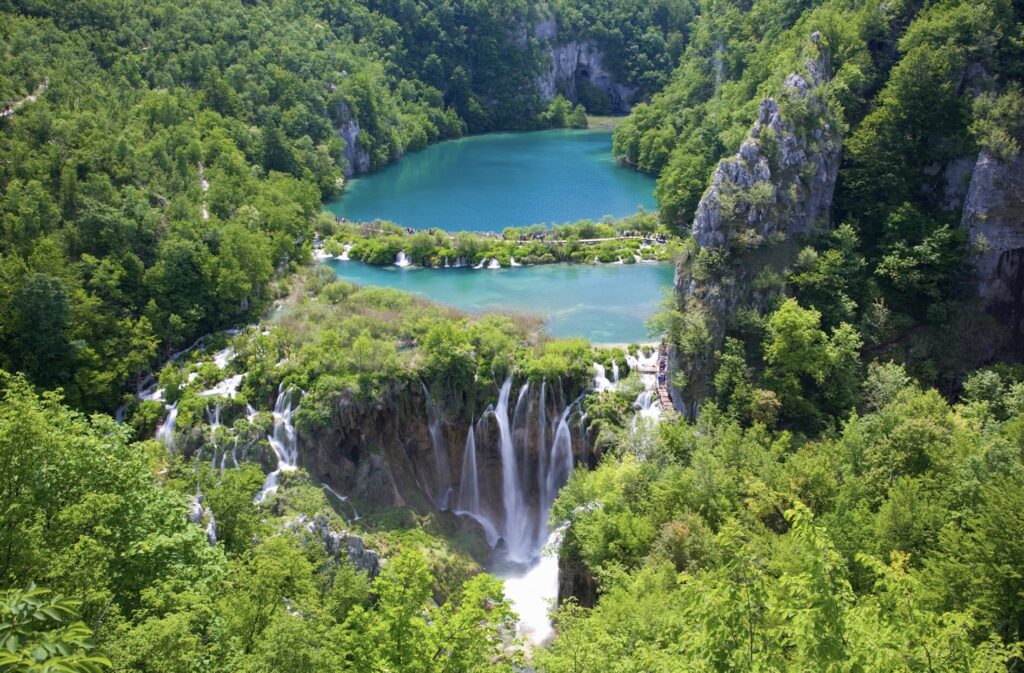
Plitvice Lakes National Park offers a variety of hiking trails that cater to different fitness levels and interests. Here are some recommended trails, ranging from easy to challenging:
Easy Trails
- Trail A (Lower Lakes Circuit)
- Distance: 3.5 km (2.2 miles)
- Duration: 2-3 hours
- Description: This trail starts at Entrance 1 and is perfect for a leisurely exploration of the park’s Lower Lakes. It takes you past iconic sites like the Veliki Slap (Great Waterfall) and the crystal-clear lakes connected by wooden footbridges. The trail is mostly flat, making it accessible for most visitors, including families with children.
- Trail E (Upper Lakes Short Circuit)
- Distance: 5.1 km (3.2 miles)
- Duration: 2-3 hours
- Description: Starting at Entrance 2, this easy trail explores the tranquil Upper Lakes. It offers serene views of smaller lakes and gentle waterfalls, with plenty of spots to stop and enjoy the natural beauty. The trail is relatively flat and well-maintained, making it suitable for a relaxed hike.
Moderate Trails
- Trail C (Combination of Upper and Lower Lakes)
- Distance: 8 km (5 miles)
- Duration: 4-5 hours
- Description: Starting at Entrance 1, this trail is a moderate option that covers both the Lower and Upper Lakes. It includes a boat ride across Lake Kozjak and offers a comprehensive experience of the park’s diverse landscapes, including several waterfalls and lush forests. The trail involves some elevation changes but is manageable for most hikers.
- Trail H (Upper Lakes Full Circuit)
- Distance: 8.9 km (5.5 miles)
- Duration: 4-6 hours
- Description: Beginning at Entrance 2, this trail is ideal for those looking to explore the entire Upper Lakes area. It includes a mix of boardwalks and forest paths, with some sections requiring moderate climbing. The trail rewards hikers with spectacular views of the lakes and waterfalls, particularly in the quieter parts of the park.
Challenging Trails
- Trail K (Grand Tour of Plitvice Lakes)
- Distance: 18.3 km (11.4 miles)
- Duration: 6-8 hours
- Description: For those seeking a more challenging adventure, Trail K offers a full-day hike that covers both the Upper and Lower Lakes, as well as the hidden corners of the park. This trail combines the routes of Trail C and Trail H and includes more remote sections of the park, steep climbs, and extended walking. It’s perfect for experienced hikers who want to see everything Plitvice has to offer.
- Trail F (Upper and Lower Lakes with Elevation)
- Distance: 10.5 km (6.5 miles)
- Duration: 5-6 hours
- Description: This trail is challenging due to its length and the elevation changes, particularly when climbing up to the higher viewpoints. Starting from Entrance 2, it covers both the Upper and Lower Lakes, offering panoramic views from elevated points. It’s a great option for hikers who are in good physical condition and want to experience more of the park’s vertical landscape.
These trails allow visitors to experience the diverse beauty of Plitvice Lakes National Park, from easy strolls along the lakes to more demanding hikes that explore the park’s remote and elevated areas.
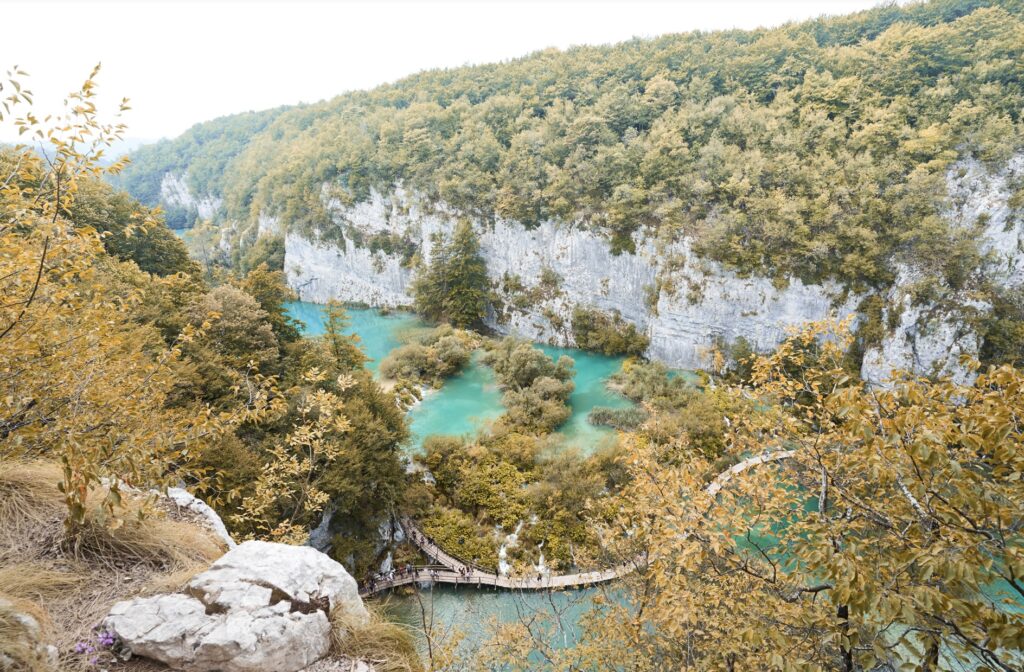
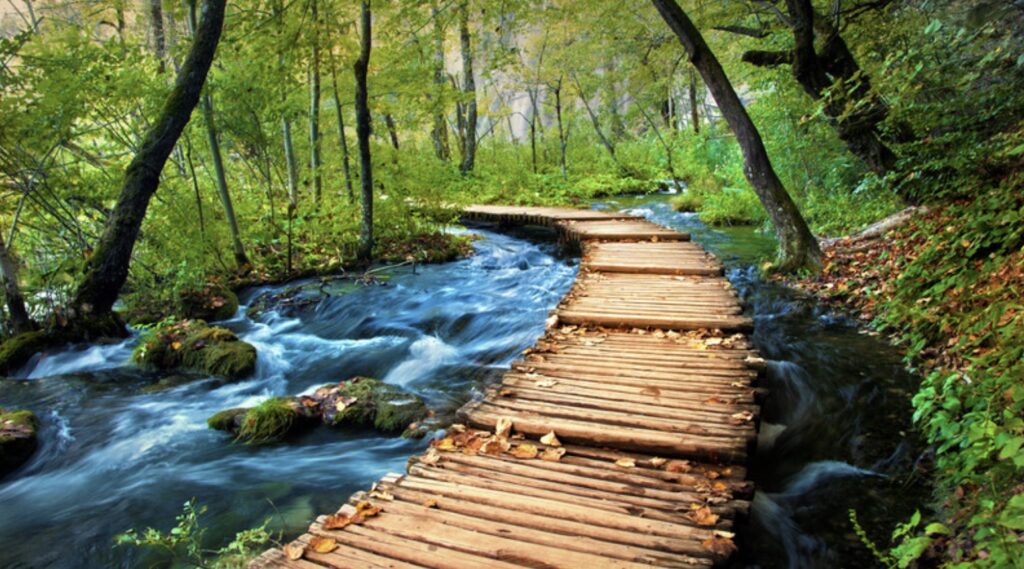
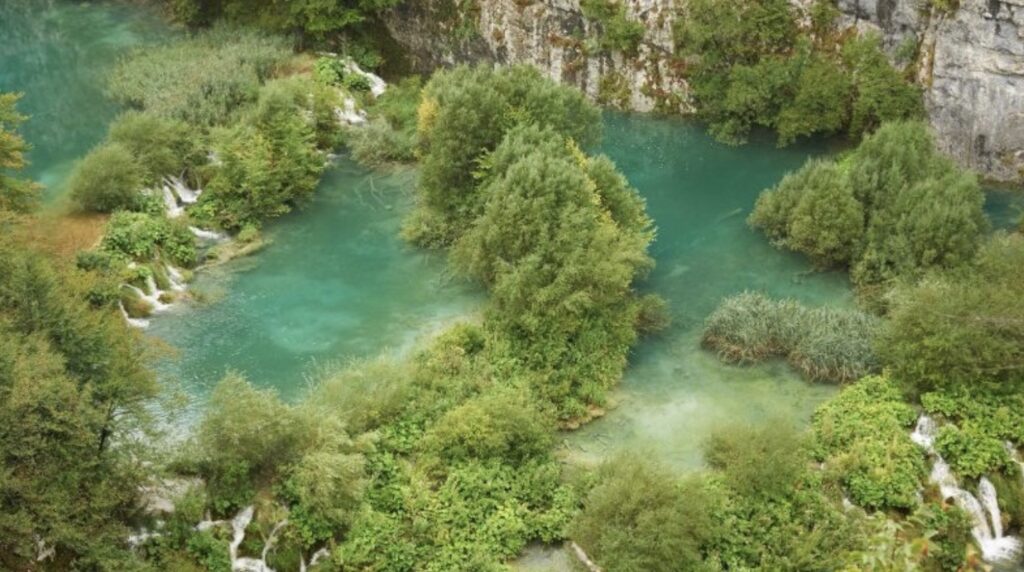
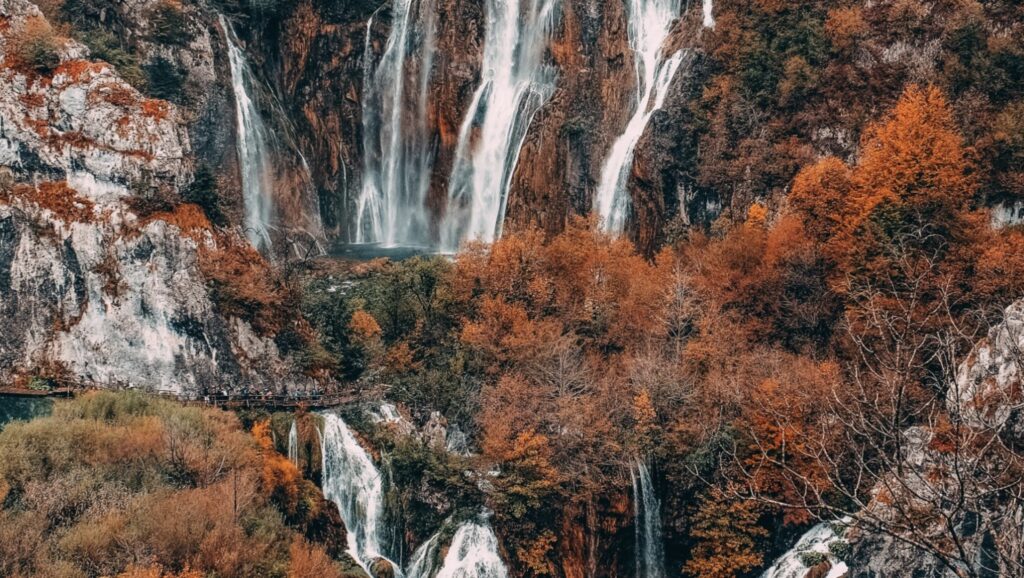
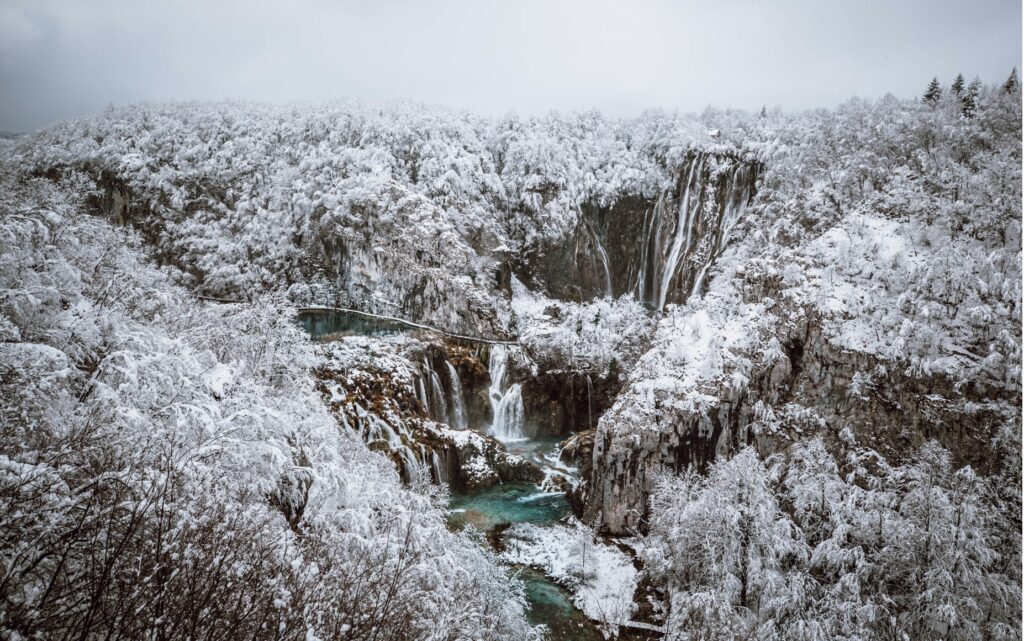
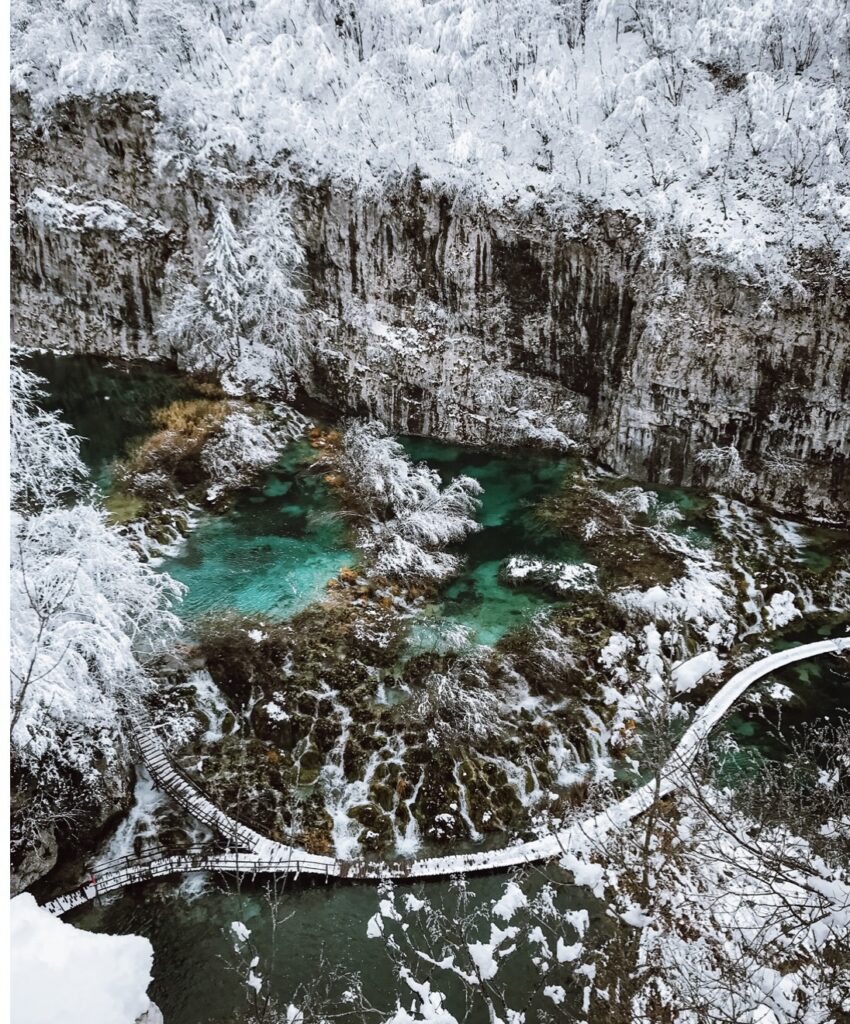
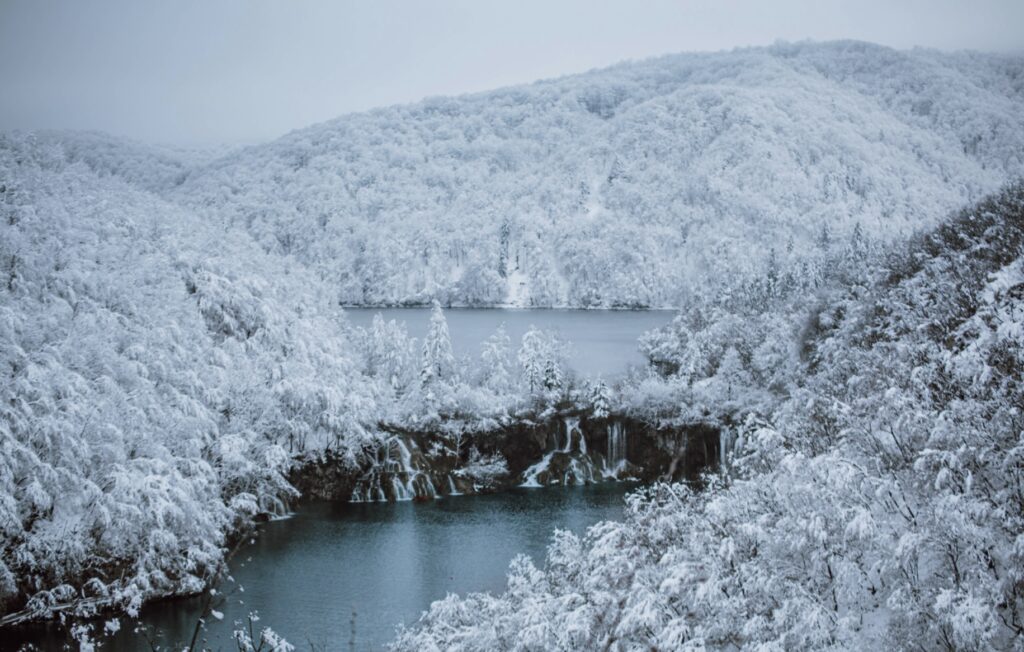
Two-Day Itinerary for Visiting Plitvice Lakes National Park
Day 1: Exploring the Lower Lakes and Local Cuisine
Morning: Arrival and Check-In
- Accommodation: Check-in at Hotel Jezero, located within the park. This hotel offers convenient access to the park’s trails and beautiful views of the surrounding nature.
Late Morning: Lower Lakes Exploration
- Begin your visit by exploring the Lower Lakes (Donja jezera). Start at Entrance 1 and follow the well-marked paths through the scenic trails that lead you to some of the park’s most famous sites, including the Veliki Slap (Great Waterfall), the tallest in the park.
- Take your time walking along the wooden boardwalks, which offer stunning views of the crystal-clear lakes and numerous waterfalls.
Lunch: Traditional Croatian Meal
- Enjoy a traditional Croatian lunch at Lička Kuća, a restaurant near Entrance 1, known for serving local specialties like lamb peka (slow-cooked lamb under a bell-shaped lid) and ličke police (potato dumplings). Pair your meal with a glass of local wine or rakija (fruit brandy).
Afternoon: Šupljara Cave and More Lower Lakes
- After lunch, continue exploring the Lower Lakes. Visit Šupljara Cave, a picturesque cave with beautiful formations and panoramic views of the lakes from its entrance.
- Take the boat across Lake Kozjak, the largest lake in the park, offering a relaxing way to see the scenery from the water.
Evening: Relaxation and Dinner
- Return to Hotel Jezero to relax after your day of exploration. Consider enjoying a spa treatment or simply unwind on the hotel’s terrace.
- For dinner, dine at the hotel’s restaurant, which offers a mix of international dishes and Croatian cuisine, including fresh fish from the region and local desserts like štrukli (baked pastry with cheese).
Day 2: Upper Lakes Hiking and Cultural Experiences
Morning: Upper Lakes Hiking
- Start your day early with a hearty breakfast at Hotel Jezero.
- Head to the Upper Lakes (Gornja jezera), where the trails take you through a series of smaller, interconnected lakes with lush forests and cascading waterfalls. This area is less crowded and offers more challenging hikes with rewarding views.
- Follow the H trail, which is about 8 km (5 miles) long and takes 4-5 hours to complete. It includes several stunning viewpoints and quiet spots for taking in the natural beauty.
Lunch: Picnic by the Lakes
- Pack a picnic lunch from the hotel or grab some local snacks from nearby shops before starting your hike. Find a scenic spot by one of the lakes to enjoy your meal surrounded by nature.
Afternoon: Cultural and Historical Sites
- After your hike, take a leisurely stroll to explore the remnants of the old watermills near Entrance 2, which reflect the traditional use of the park’s water resources.
- Visit the Fortified Village of Korana, located just outside the park, to see traditional wooden houses and learn about the local way of life.
Evening: Farewell Dinner
- Return to the park for a final dinner at Lička Kuća or the hotel restaurant, where you can enjoy more local dishes and reflect on your visit.
Night: Relax and Departure Preparation
- Spend your final evening relaxing at the hotel, perhaps enjoying a drink on the terrace or taking a final evening walk around the park before preparing for departure the next day.
This itinerary offers a balanced mix of hiking, cultural exploration, and local cuisine, ensuring you experience the best of Plitvice Lakes National Park over two memorable days.
